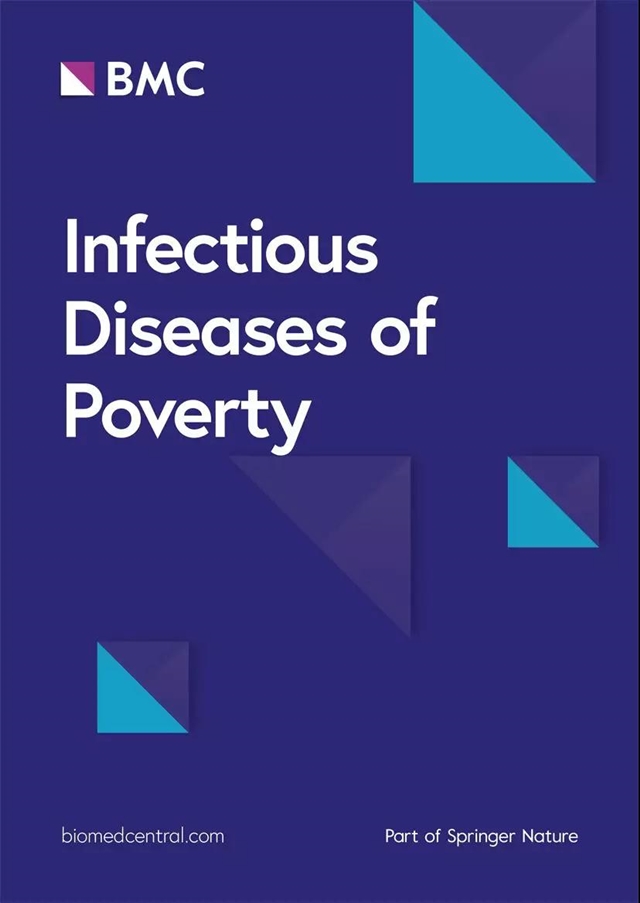Evidence-practice gap analysis in the role of tick in brucellosis transmission: a scoping review
IF 5.5
1区 医学
Q1 INFECTIOUS DISEASES
引用次数: 0
Abstract
Brucellosis is a zoonotic affliction instigated by bacteria belonging to the genus Brucella and is characterized by a diverse range of pervasiveness, multiple transmission routes, and serious hazards. It is imperative to amalgamate the current knowledge and identify gaps pertaining to the role of ticks in brucellosis transmission. We systematically searched China National Knowledge Infrastructure (CNKI), WanFang, Google Scholar, and PubMed on the topic published until April 23, 2022. The procedure was performed in accordance with the Systematic Reviews and Meta-Analyses extension for Scoping Reviews (PRISMA-ScR) guidelines. The selected articles were categorized across three major topic areas, and the potential data was extracted to describe evidence-practice gaps by two reviewers. The search identified 83 eligible studies for the final analyses. The results highlighted the potential capacity of ticks in brucellosis transmission as evidenced by the detection of Brucella in 16 different tick species. The pooled overall prevalence of Brucella in ticks was 33.87% (range: 0.00–87.80%). The review also revealed the capability of Brucella to circulate in parasitic ticks' different developmental stages, thus posing a potential threat to animal and human health. Empirical evidence from in vitro rodent infection experiments has revealed that ticks possess the capability to transmit Brucella to uninfected animals (range: 45.00–80.00%). Moreover, significant epidemiological associations have been found between the occurrence of brucellosis in animals and tick control in rangelands, which further suggests that ticks may serve as potential vectors for brucellosis transmission in ruminants. Notably, a mere three cases of human brucellosis resulting from potential tick bites were identified in search of global clinical case reports from 1963 to 2019. It is imperative to improve the techniques used to identify Brucella in ticks, particularly by developing a novel, efficient, precise approach that can be applied in a field setting. Furthermore, due to the lack of adequate evidence of tick-borne brucellosis, it is essential to integrate various disciplines, including experimental animal science, epidemiology, molecular genetics, and others, to better understand the efficacy of tick-borne brucellosis. By amalgamating multiple disciplines, we can enhance our comprehension and proficiency in tackling tick-borne brucellosis.蜱虫在布鲁氏菌病传播中作用的证据与实践差距分析:范围研究
布鲁氏菌病是一种由布鲁氏菌属细菌引发的人畜共患疾病,其特点是广泛流行、传播途径多、危害严重。当务之急是整合现有知识,找出蜱虫在布鲁氏菌病传播中的作用。我们系统地检索了中国知网(CNKI)、万方数据库、谷歌学术和PubMed上截至2022年4月23日发表的有关该主题的文章。检索过程符合系统综述和荟萃分析扩展范围综述(PRISMA-ScR)指南的要求。所选文章按三大主题领域进行分类,并由两名审稿人提取潜在数据,以描述证据与实践之间的差距。搜索结果为最终分析确定了 83 项符合条件的研究。结果表明,蜱虫在布鲁氏菌病传播中的潜在能力,16 种不同蜱虫中都检测到了布鲁氏菌。布鲁氏菌在蜱虫中的总流行率为 33.87%(范围:0.00-87.80%)。该研究还揭示了布鲁氏菌在寄生蜱不同发育阶段的循环能力,从而对动物和人类健康构成潜在威胁。体外啮齿动物感染实验的经验证据表明,蜱虫有能力将布鲁氏菌传播给未感染的动物(范围:45.00-80.00%)。此外,在动物布鲁氏菌病的发生与牧场蜱虫控制之间发现了明显的流行病学关联,这进一步表明蜱虫可能是反刍动物布鲁氏菌病传播的潜在媒介。值得注意的是,在1963年至2019年的全球临床病例报告中,仅发现了三例潜在蜱虫叮咬导致的人类布鲁氏菌病。当务之急是改进用于鉴定蜱虫布鲁氏菌的技术,特别是开发一种可用于野外环境的新型、高效、精确的方法。此外,由于缺乏蜱传布布鲁氏菌病的充分证据,因此必须整合实验动物科学、流行病学、分子遗传学等多个学科,以更好地了解蜱传布布鲁氏菌病的功效。通过多学科的融合,我们可以提高应对蜱传布布鲁氏菌病的理解力和熟练程度。
本文章由计算机程序翻译,如有差异,请以英文原文为准。
求助全文
约1分钟内获得全文
求助全文
来源期刊

Infectious Diseases of Poverty
Medicine-Public Health, Environmental and Occupational Health
CiteScore
16.70
自引率
1.20%
发文量
368
审稿时长
13 weeks
期刊介绍:
Infectious Diseases of Poverty is a peer-reviewed, open access journal that focuses on essential public health questions related to infectious diseases of poverty. It covers a wide range of topics and methods, including the biology of pathogens and vectors, diagnosis and detection, treatment and case management, epidemiology and modeling, zoonotic hosts and animal reservoirs, control strategies and implementation, new technologies, and their application.
The journal also explores the impact of transdisciplinary or multisectoral approaches on health systems, ecohealth, environmental management, and innovative technologies. It aims to provide a platform for the exchange of research and ideas that can contribute to the improvement of public health in resource-limited settings.
In summary, Infectious Diseases of Poverty aims to address the urgent challenges posed by infectious diseases in impoverished populations. By publishing high-quality research in various areas, the journal seeks to advance our understanding of these diseases and contribute to the development of effective strategies for prevention, diagnosis, and treatment.
 求助内容:
求助内容: 应助结果提醒方式:
应助结果提醒方式:


